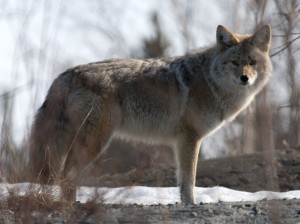
© Marke Clinger CC BY 2.0
Toronto residents are reporting increased sightings of coyotes in urban neighbourhoods. But the canines – often portrayed as scheming creatures in native folklore – are getting a mixed reception in Canada’s largest city.
While some urbanites are pleased to see a resurgence of the animals, others fear attacks on their pets or children. Wildlife organisations were outraged when police shot dead a coyote last year, after responding to complaints from residents that it was roaming close to their homes.
The city, which is close to typical coyote habitat, such as forests and ravines, can expect to see much more of the animals during the winter months. As temperatures plummet, coyotes’ typical food sources, such as small mice and rodents, become scarce, so the animals often travel into urban areas in search of food.
Despite the creatures’ somewhat negative portrayal in the media, Toronto Wildlife Council has suggested that if households take appropriate measures to limit their contact with coyotes there is nothing to fear.
“People have unrealistic fears about coyotes,” said Nathalie Karvonen, executive director of Toronto Wildlife Centre. “While many animals that live in our communities have the potential to be dangerous, coyote attacks on people are virtually unheard of.”
Residents in areas with high coyote populations have been advised to remain alert during the cold season and take measures to avoid attracting the animals to their homes. Coyotes are normally shy, but out of natural curiosity they may watch or follow humans. Feeding them makes the animals less fearful of humans, which is likely to increase unwanted contact.
Coyotes have become a natural part of the urban landscape in Toronto and increased winter sightings are completely normal. “[They] are an important part of the ecosystem as they control rodent and rabbit populations,” a spokesperson for Toronto’s city authority said. “They thrive in urban areas because of the abundance of food and shelter available to them.”
The coyote appears often in the tales and traditions of native cultures, and is usually portrayed as a very clever beast. Modern coyotes have lived up to their legendary status by showing their ability to adapt to the changing North American landscape.





